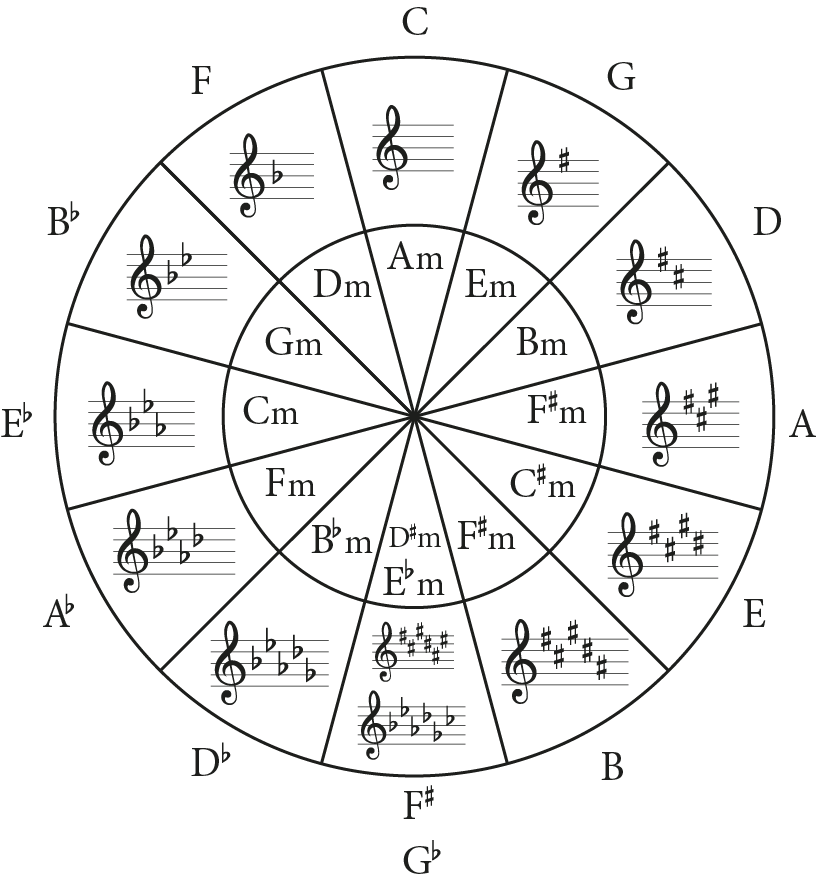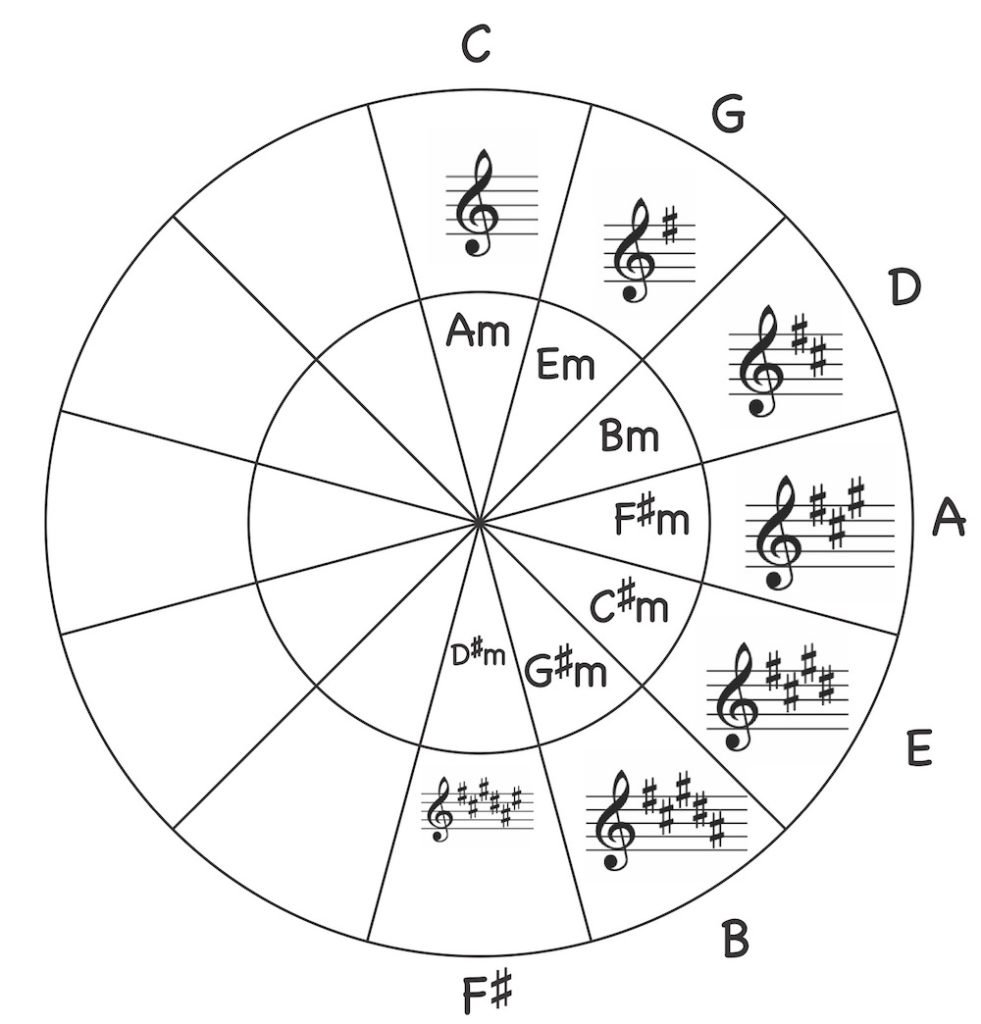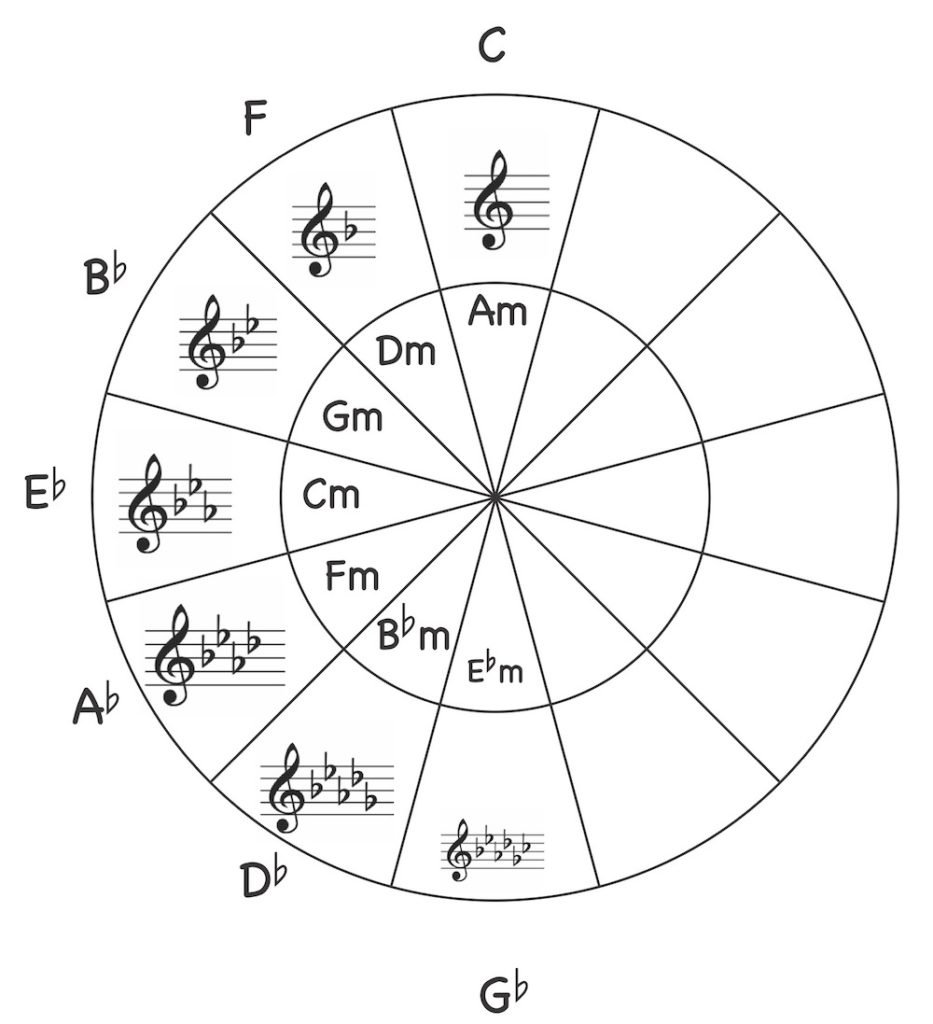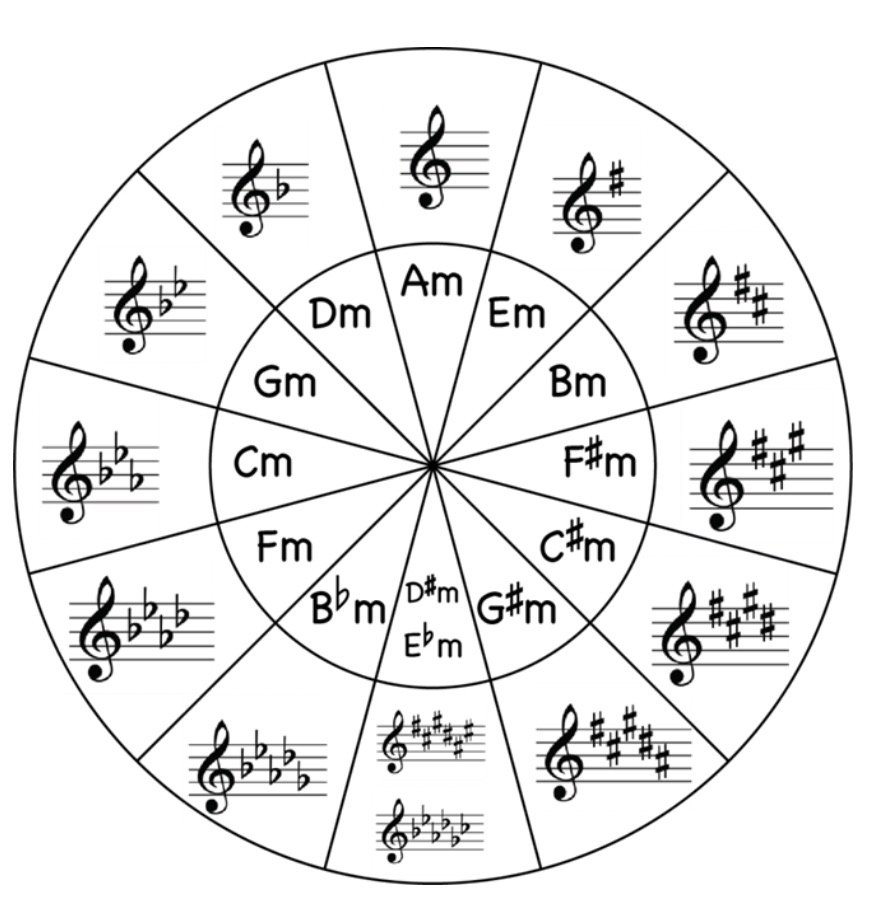The circle of fifths is an incredible tool for performing musicians and composers alike! It is a key aspect of music theory. In this post we will look at what the circle of fifths is, what it shows us, how to read it, how to use it and also provide you with a free circle of fifths cheat sheet.
What is the circle of fifths?
The circle of fifths is a circular diagram that helps to show you the most common keys and key signatures we use in music. It helps you to see how these keys relate to each other, which in turn helps you to build chord progressions when you write music. For more specific information on what the circle of fifths is then do make sure to check out this post, we also have a detailed post on keys and scales here!

We have a free interactive circle of fifths that you use to see major, minor, flat or sharp keys individually. It even shows the circle in four different clefs!
[thrive_leads id=’14034′]
What does the circle of fifths show me?
The circle of fifths is a handy way to see your major keys and their relative minor keys. The circle of fifths also provides you with the key signatures for every major key and minor key. Remember that every major key has a relative minor key and these share the same key signature.
Having this information in one handy diagram helps you to quickly see how many sharps or flats a particular key has, how they relate to each other and also helps you to work out chord progressions in a quick and efficient way.
How do I read the circle of fifths?
The circle of fifths is divided into twelve equal sections to represent the twelve available notes. At the very top of the circle we always have the scale of C major. This is because, C major has no sharps or flats. Learn more about how the C Major scale is formed with this post.
To the right hand side (moving clockwise) of the circle we add in our sharp major keys. To work these out we simply count up a fifth (five notes). If we count up five notes from C we get to the note G. G major is the next sharp major key on our circle. The G major scale will always have one sharp in it’s key signature. If we keep moving round, we continue in the same pattern.
Five notes up from G is D. D major is the next sharp scale on the circle and this will have two sharps. We simply use this same formula to work out the notes clockwise around the circle!
You can do this comfortably all the way up to seven sharps, this would be the key of C sharp major. Although typically, most circles will just take you up to F sharp major which has six sharps. Take a look at the example below to see the sharp major keys.

To the left hand side of the circle we have the flat major keys. Again we start on the note C, and essentially use the same formula, except this time we will count backwards a fifth (five notes). Backwards five notes from C will bring us to F. This means the first flat major key on the circle is F major. F major will have one flat. Using this repetition rule of a fifth, the next scale around the circle will be B flat. This means the next key on the circle is B flat major and this will have two flats. As with the sharp major keys you can continue moving anti clockwise (counter clockwise) until you reach seven flats, the key of C flat major! Take a look at the example below to see the flat major keys.

What’s in the inner circle?
The inner circle of fifths has all of the minor keys. Remember every major key has a relative minor key. These share the same key signature and will be written on the inner circle next to the major key. To learn more about how to work these out make sure to check out our more detailed circle of fifths blog post here.

Using the circle of fifths
The circle of fifths can be used to help find key signatures, build scales, build chords and also put together chord progressions ! The circle of fifths is your ultimate cheat sheet for all things music theory.
We also have a our a more in-depth article on how to use the circle of fifths.

